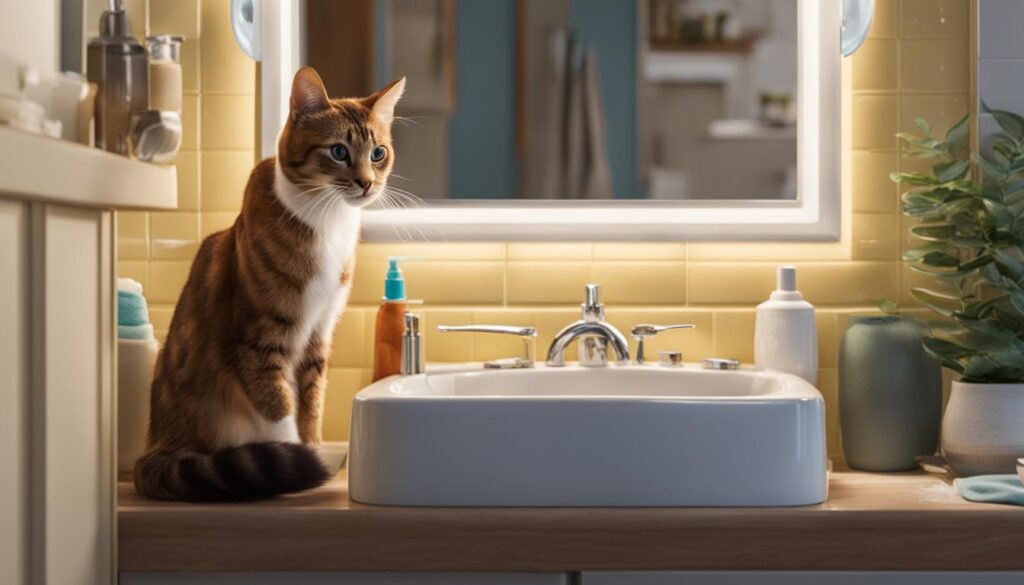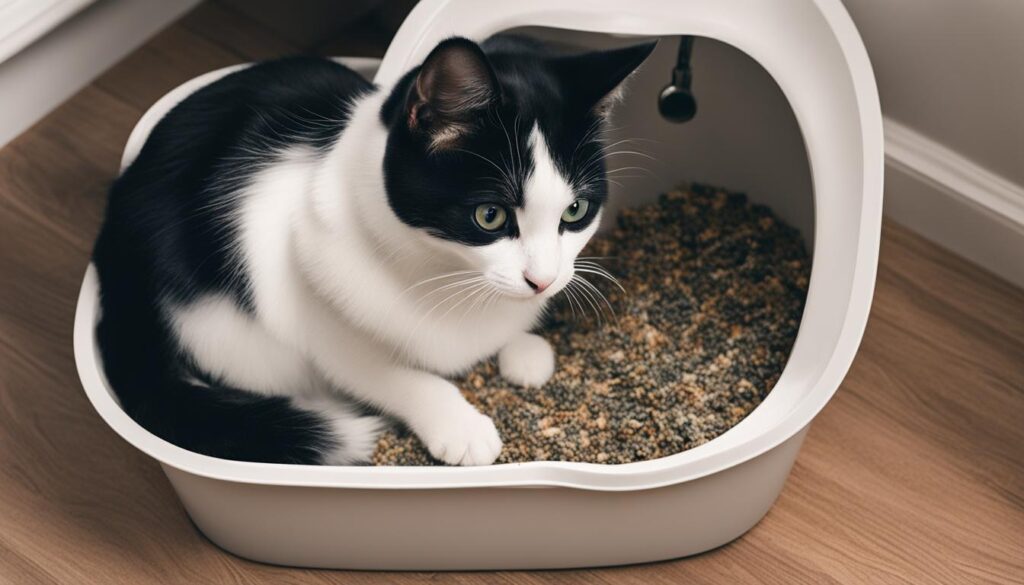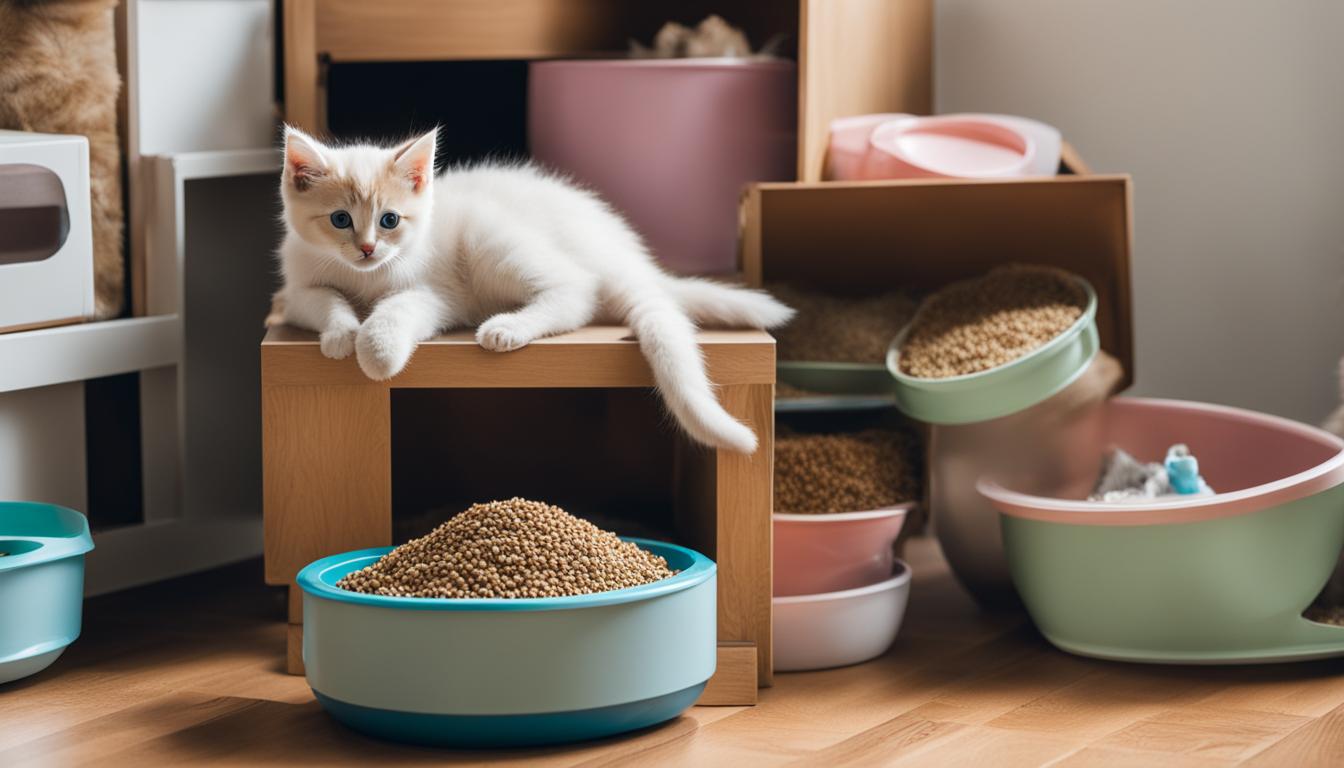Adventures in Cat Parenting: Tips and Tricks for New Cat Owners
Becoming a first-time cat parent can be both exciting and nerve-wracking. As new cat owners, we embark on a journey filled with love, joy, and the responsibility of ensuring the well-being of our feline companions. To provide the best care for our beloved cats, it’s crucial to acquire the knowledge and skills necessary to navigate the world of cat parenting.
In this article, we will explore essential cat care tips that every new cat owner should know. From bonding with your new cat to understanding feline behaviors, we’ll provide guidance on various aspects of feline care. Whether you’re a seasoned pet owner or a complete novice, these tips and tricks will help you excel in cat parenting and create a strong, loving bond with your furry friend.
Key Takeaways:
- Preparing for cat ownership is essential for a smooth transition.
- Bonding with your cat requires patience and understanding.
- Introducing a new cat to a multi-pet household requires caution and proper quarantine.
- Regular oral hygiene and dental care are crucial for your cat’s health.
- Choosing the right litter box and training your cat is important for a clean environment.
Be Careful with Strays if You Have Other Household Pets
If you’ve recently picked up a stray cat, it’s crucial to be cautious when introducing them to other household pets. Strays may carry parasites and contagious illnesses, so it’s essential to quarantine them before making any introductions. It’s advisable to seek a vet’s approval before introducing the new feline to the rest of your furry crew.
Introducing a stray cat into a multi-pet environment requires careful consideration and preparation. Keep in mind that strays might have had limited or no vaccinations, increasing the risk of spreading diseases to your existing pets. Quarantine is vital to ensure the health and safety of everyone involved.
During the quarantine period, observe the stray cat for any signs of illness, such as sneezing, coughing, diarrhea, or loss of appetite. If you notice any concerning symptoms, contact your vet immediately for guidance. They may recommend additional tests or treatments to address any potential health issues.
Once the quarantine period is over and your vet gives the green light, it’s time to cautiously introduce the stray cat to your other pets. Slow and gradual introductions are key to reducing stress and ensuring a successful integration.
Start by giving each of your pets their own separate space, allowing them to become familiar with each other’s scents. You can exchange blankets or bedding between the animals to help them get acquainted without direct contact.
When you feel the time is right for a face-to-face meeting, always supervise the interactions. Use gates or doors to separate the pets initially, allowing them to see and smell each other. If there are any signs of aggression or excessive stress, separate them again and consult with a professional behaviorist.
Remember, each cat has their own unique personality and comfort level. Some may adapt quickly, while others may take more time to adjust. Be patient and provide plenty of positive reinforcement for good behavior.
“Introducing a stray cat to a multi-pet environment requires patience and careful monitoring. By taking the necessary precautions and seeking professional advice, you can ensure a harmonious integration and a happy, healthy home for all your pets.”
Essential Steps for Introducing a Stray Cat to Other Pets
| Step | Description |
|---|---|
| 1 | Quarantine the stray cat in a separate room for at least two weeks. |
| 2 | Monitor the stray cat for any signs of illness or behavioral issues. |
| 3 | Consult with a veterinarian for a health check and vaccination recommendations. |
| 4 | Allow your pets to become familiar with each other’s scents through bedding exchange. |
| 5 | Supervise face-to-face interactions between the stray cat and your other pets. |
| 6 | Provide positive reinforcement and separate pets if necessary. |
Know that Bonding Won’t Be Instant
When it comes to cat parenting, it’s important to keep in mind that bonding with your new furry friend won’t happen overnight. Just like humans, cats need time to develop trust and familiarity with their new pet parents. While some cats may immediately take to their new homes, others may require more time and patience.
It’s crucial to avoid forcing your cat to cuddle or interact if they’re uncomfortable. Instead, let them come to you on their own terms. Create a safe and inviting environment by providing cozy hiding spots, comfortable bedding, and plenty of toys to keep them engaged.
Building a strong and lasting bond takes time, and the key is to be patient and understanding. Spend quality time with your cat, offering gentle petting and soft-spoken words. Additionally, treats can work wonders when it comes to building positive associations. Offering treats during quiet, calm moments will help your cat associate your presence with positive experiences.
Quotes:
“Bonding with a new cat is a journey, not a destination. It requires time, understanding, and respect for your cat’s individual personality and needs.”
– Dr. Emily Thompson, Feline Behavior Specialist
Remember, every cat is unique, and their bonding process will vary. Some cats may become your best friend in a matter of days, while others may take weeks or even months to feel truly comfortable. Whether it’s through playtime, grooming sessions, or simply being present in the same room, each interaction strengthens your bond and deepens the trust between you and your feline companion.
| Tips for Bonding with Your Cat | Benefits |
|---|---|
| Be patient and let your cat come to you | – Builds trust and confidence |
| Create a calm and inviting environment | – Helps your cat feel safe and secure |
| Spend quality time together | – Strengthens the bond and creates positive associations |
| Use treats for positive reinforcement | – Helps to build trust and encourage positive behavior |
No matter how long it takes, the journey to building a strong bond with your cat is a rewarding one. The love and companionship you receive in return are immeasurable. So, embrace the process, celebrate even the smallest milestones, and cherish the unique bond you share with your feline friend.

Navigating Inter-Cat and Inter-Species Struggles
When it comes to cat parenting, one of the challenges new cat owners may face is navigating inter-cat and inter-species struggles. Cats can be territorial by nature, and introducing a new cat or other animals into the household can sometimes lead to conflicts. It’s essential to understand how to manage these situations to ensure a harmonious living environment for all.
To effectively navigate inter-cat relationships and minimize territorial behavior, it’s important to take things slow and give cats time to adjust to each other’s presence. Forced interactions can lead to stress and aggression, so it’s best to allow them to set the pace. Providing separate spaces and resources for each cat, such as food bowls, litter boxes, and resting areas, can also help reduce potential conflicts.
“Giving cats time to adjust and respecting their personal space is key to building positive inter-cat relationships,” says Dr. Emily Thompson, a veterinarian specializing in feline behavior.
“It’s important to remember that each cat is an individual, with unique personalities and preferences. By allowing them to interact on their own terms and using positive reinforcement techniques, we can encourage tolerance and create a peaceful coexistence.”
Positive reinforcement can play a significant role in promoting harmonious inter-cat relationships. Rewarding cats for calm and relaxed behaviors around each other, using treats or praise, can help create positive associations. It’s important to provide enrichment activities and environmental stimulation to keep cats mentally and physically engaged, which can divert their attention from territorial conflicts.
If despite your best efforts, aggression between cats persists or escalates, seeking professional help from a veterinarian or animal behavior specialist is recommended. They can provide further guidance and behavior modification techniques tailored to your specific situation.
| Tips for Navigating Inter-Cat and Inter-Species Struggles: |
|---|
| – Introduce cats gradually and allow them to set their own pace |
| – Provide separate resources for each cat, such as food bowls, litter boxes, and resting areas |
| – Use positive reinforcement techniques to reward calm and relaxed behaviors |
| – Offer enrichment activities and environmental stimulation to divert attention from conflicts |
| – Seek professional help if aggression persists or escalates |
Make Oral Hygiene a Priority from the Start
Just like humans, cats can also experience dental issues if their oral hygiene is neglected. As new cat owners, it’s important to prioritize your feline friend’s dental health right from the beginning. Regular brushing and dental cleanings are essential for preventing dental diseases and maintaining a healthy mouth.
To establish good oral hygiene habits, start brushing your cat’s teeth from a young age. Use a toothbrush and toothpaste specifically formulated for cats. Make sure to introduce the toothbrush gradually and go slow to ensure your cat feels comfortable during the process. Remember, a positive and patient approach is key to successful brushing sessions.
In addition to brushing, regular dental cleanings by a veterinarian are recommended to ensure thorough plaque and tartar removal. Your vet will have the necessary tools and expertise to clean your cat’s teeth effectively.
Keep in mind that establishing a dental care routine early on can make it easier as your cat grows older. By prioritizing oral hygiene, you are investing in your cat’s overall well-being and preventing potential dental problems.

| Benefits of Oral Hygiene for Cats |
|---|
| Prevents dental diseases such as periodontal disease and gingivitis |
| Reduces the risk of tooth decay and tooth loss |
| Helps maintain fresh breath |
| Improves overall health by preventing the spread of bacteria |
Have Appropriate Cleaning Chemicals on Hand to Tackle Accidents
Accidents are bound to happen when you have a cat, whether it’s potty mishaps or spraying incidents. As new cat owners, it’s important to be prepared and equipped with the right cleaning products to effectively clean up accidents and eliminate odors.
One of the most effective cleaning products for cat accidents is an enzymatic cleaner. Enzymatic cleaners are specifically designed to break down urine molecules and remove stubborn stains and odors, ensuring that your home stays fresh and clean. They are ideal for both carpets and hard surfaces.
Enzymatic cleaners work by using natural enzymes to break down and neutralize the source of the smell, eliminating it at the molecular level. This not only eliminates the odor but also prevents your cat from returning to the same spot, as the scent is completely removed.
When choosing an enzymatic cleaner, look for one that is specifically formulated for pet accidents. These cleaners are designed to tackle the strong smells and stains caused by cat urine. It’s important to note that not all cleaning products are created equal, so be sure to read the labels and choose a reputable brand.
Avoid using cleaners that contain chemicals like ammonia or bleach. While these products may mask the odor temporarily, they can actually attract cats back to the same spot due to their smell. Additionally, these chemicals can be harmful to cats if ingested or inhaled.
Remember, prompt and thorough cleaning is key to preventing repeat accidents and maintaining a hygienic environment for both you and your cat.
Benefits of Enzymatic Cleaners for Cat Accidents:
| Benefits | Description |
|---|---|
| Eliminates Odors | Enzymatic cleaners break down and neutralize the source of the smell, eliminating it at the molecular level. |
| Prevents Repeat Accidents | By completely removing the scent, enzymatic cleaners discourage cats from returning to the same spot. |
| Safe for Cats | Enzymatic cleaners are usually formulated with pet-friendly ingredients, ensuring the safety of your furry friend. |
| Effective on Multiple Surfaces | Enzymatic cleaners are suitable for various surfaces, including carpets, upholstery, and hard floors. |
Put Some Thought into Their Litter Box
Choosing the right litter box and training your cat to use it is crucial for maintaining a clean and healthy environment. As new cat owners, it’s important to consider your cat’s preferences and provide them with a litter box that suits their needs.
- Covered boxes for privacy: Some cats prefer privacy when using the litter box. A covered box can provide them with a sense of security and keep the litter contained.
- High-sided boxes to minimize mess: Cats can be enthusiastic diggers, which can result in litter scattering outside the box. Opting for a high-sided box can help contain the mess and prevent litter from ending up all over your floors.
When introducing a kitten to the litter box, it’s important to teach them its purpose. Place them in the box after meals or whenever they show signs of needing to go. Encourage them to use the litter box by gently scratching the litter with their paws. Consistency and positive reinforcement will help them develop good habits.
Keeping your cat’s litter box clean is essential. Cats are clean animals and may refuse to use a dirty box. Scoop the litter box daily and change the litter regularly. This will not only keep your cat happy but also help maintain a fresh and odor-free home.
Remember, each cat is unique, so finding the litter box and litter that works best for them may require some trial and error. Pay attention to your cat’s preferences and behavior to ensure they have a comfortable and accessible space to do their business.

Tips for Choosing the Right Litter Box:
- Consider the size of the litter box based on your cat’s breed and size.
- Ensure the litter box has low sides for easy access, especially for kittens or older cats with mobility issues.
- Choose a litter box with smooth edges and a material that is easy to clean.
Tips for Successful Litter Box Training:
- Place the litter box in a quiet and easily accessible location.
- Use a litter that your cat finds comfortable and appealing, such as clumping or unscented litter.
- Avoid placing food and water bowls close to the litter box to maintain hygiene and reduce stress.
Know that the Holistic Route Isn’t Always the Best Health Approach for Beginners
When it comes to the health of our feline friends, many new cat owners are intrigued by the idea of holistic cat care. While holistic approaches may offer benefits, it’s important to proceed with caution, especially if you’re a beginner in the world of cat parenting.
As responsible cat owners, we want to give our cats the best care possible. However, when it comes to holistic remedies and alternative treatments, it’s crucial to consult a veterinary professional before trying anything new.
Remember, some herbs and essential oils that seem harmless to us can be toxic to cats. Your cat’s health and safety should always be the top priority.
Online information can sometimes be misleading and contradictory, making it even more important to seek professional veterinary advice. Veterinary professionals have the knowledge and expertise to guide you in making informed decisions about your cat’s healthcare.
Whether it’s choosing the right diet, exploring natural remedies, or considering alternative treatments, consulting a vet ensures that you’re on the right track. They can provide personalized advice based on your cat’s specific needs, health history, and any underlying conditions.
Our Recommendation
When it comes to holistic cat care, it’s better to be safe than sorry. Before embarking on any new health approach, seek guidance from a trusted veterinarian who can offer expert advice tailored to your cat’s individual needs.
Remember, as a new cat owner, it’s essential to prioritize your cat’s well-being and rely on professional veterinary care. By working closely with a vet, you can provide your furry companion with the best possible care.
Incorporating holistic approaches to cat health can be beneficial, but it’s important to consult a vet before attempting any herbal remedies or alternative treatments. Your cat’s health and safety should always be the top priority.
Conclusion
Owning a cat comes with responsibilities, but with the right knowledge and dedication, it can be a rewarding experience. As new cat owners, it’s crucial to prioritize the well-being of our feline friends and practice responsible cat ownership.
To ensure the overall health and happiness of our cats, we should provide them with proper food, grooming, and healthcare. By feeding them a balanced diet, regularly grooming their coat, and taking them for regular check-ups, we can help prevent potential health issues and ensure their well-being.
Additionally, exercise and training play a significant role in cat care. Engaging our cats in interactive play and providing them with stimulating toys can help keep them physically active and mentally stimulated. Furthermore, training them with positive reinforcement techniques can promote good behavior and strengthen our bond with them.
Understanding our cat’s needs and building a strong bond are key to responsible cat ownership. By spending time with our cats, observing their behaviors, and tailoring their environment to their needs, we can create a loving and fulfilling relationship. Remember, each cat is unique, so being attentive to their individual preferences and providing a nurturing environment is essential.
FAQ
How should I introduce a stray cat to my other pets?
It’s important to quarantine stray cats and seek a vet’s approval before introducing them to other household pets due to potential parasites and contagious illnesses they may carry.
How can I bond with my new cat?
Bonding with your cat takes time. Be patient, avoid forcing interactions, and use treats to build trust and familiarity.
What should I do if my cats are not getting along?
Monitor their interactions, introduce them slowly, and use positive reinforcement to encourage tolerance. If aggression persists, consult with a vet or behavior specialist.
How can I maintain my cat’s dental health?
Regular brushing and dental cleanings, using cat-specific toothpaste, are essential for your cat’s dental health. Start this routine from a young age.
What cleaning products should I use for cat accidents?
Use enzymatic cleaners to effectively clean up accidents and eliminate odors. Avoid cleaners with ammonia or bleach, as they can attract cats back to the same spot.
How do I choose the right litter box and train my cat to use it?
Consider your cat’s preferences and provide them with a litter box that suits their needs. Teach kittens the purpose of a litter box and keep it clean to avoid accidents.
Can I use holistic approaches for my cat’s health?
It’s important to consult a vet before trying any herbal remedies or alternative treatments. Some herbs and essential oils can be toxic to cats, and seeking professional veterinary advice ensures their health and safety.
What’s involved in responsible cat ownership?
Providing proper food, grooming, healthcare, exercise, and training are essential for being a responsible cat owner. Understanding your cat’s needs and building a strong bond will create a loving and fulfilling relationship.


